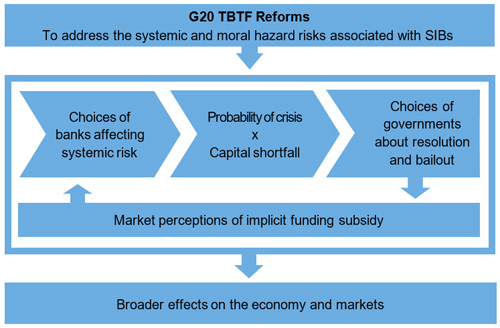Press enquiries:
+41 61 280 8138
[email protected]
Ref no: 17/2020
The Financial Stability Board (FSB) Regional Consultative Group (RCG) for Europe held a conference call today to discuss global and regional macroeconomic and financial market developments and their potential impact on European economies.
Members exchanged views on the latest financial stability implications of COVID-19, including the wide range of policy measures authorities have taken to sustain the supply of credit to the real economy, to support financial intermediation, and to preserve the functioning and resilience of the global financial system, as well as their effectiveness. The group highlighted the importance of stress tests concerning banks’ asset quality and lending capacity, and of considering how policy measures might need to evolve over time.
The group also received an update on the FSB’s work programme, which has been re-prioritised to focus on responding to the impact of COVID-19 on the financial system. Members welcomed the FSB’s policy work on enhancing global payment systems, LIBOR transition and other areas to promote a strong global financial system that supports the real economy.
Notes to editors
The RCG Europe is co-chaired by Katharine Braddick, Director General, Financial Services at the UK Treasury and Henry Ohlsson, Deputy Governor, Sveriges Riksbank. The membership of the FSB Regional Consultative Group for Europe includes financial authorities from Austria, Belgium, Czech Republic, Denmark, Finland, France, Germany, Greece, Hungary, Iceland, Ireland, Israel, Italy, Luxembourg, Netherlands, Norway, Poland, Portugal, Romania, Spain, Sweden, Switzerland, Ukraine, United Kingdom and the Group of International Finance Centre Supervisors. The European Commission, the European Central Bank, the ECB Banking Supervision, and European Banking Authority also attended the meeting.
The FSB has six Regional Consultative Groups, established under the FSB Charter, to bring together financial authorities from FSB member and non-member countries to exchange views on vulnerabilities affecting financial systems and on initiatives to promote financial stability. Typically, each Regional Consultative Group meets twice each year.
The FSB coordinates at the international level the work of national financial authorities and international standard-setting bodies and develops and promotes the implementation of effective regulatory, supervisory, and other financial sector policies in the interest of financial stability. It brings together national authorities responsible for financial stability in 24 countries and jurisdictions, international financial institutions, sector-specific international groupings of regulators and supervisors, and committees of central bank experts.
The FSB is chaired by Randal K. Quarles, Vice Chairman, US Federal Reserve; its Vice Chair is Klaas Knot, President of De Nederlandsche Bank. The FSB Secretariat is located in Basel, Switzerland, and hosted by the Bank for International Settlements.
